Franck Cammas, Nacra F20 Carbon FCS, and Cape Horn
Published on July 10th, 2015
Every year, eyewear brand Julbo offers one of its athletes the chance to realise a dream with a unique sporting feat. This year it is the turn of French sailor Franck Cammas, who has won the Route du Rhum, the Volvo Ocean Race and the “Little America’s Cup”. Cammas is also head of the French challenge, Groupama Team France, for the 35th Americas Cup.
For the unique sporting feat, Cammas will be taking an expedition to Cape Horn in a Nacra F20 Carbon FCS.
Cammas will be recruiting a teammate who will win a place on this challenge, which is being planned for November 2015. Candidates should therefore demonstrate a strong background in sport catamarans or dinghy sailing. Candidates are invited to post on this page, before September, their nautical CV and a video presentation combining a face to camera interview and images of them sailing.
Cammas will select the most suitable people, who will then be invited to a training session in Lorient in September.
The challenge: to round the Horn in flying catamaran and dock there
That is easier said than done. The adventure will begin well before. The first challenge will be the logistics of transporting the Nacra F20 Carbon FCS to Puerto Williams in Chile. The weather will also be important in this challenge on the edge of the world. The land of fire is regularly swept by storms coming up from Antarctica and the Furious Fifties.
From Puerto Williams, the expedition will head to Puerto Toro. This village of about 50 people is the southernmost city of the world (excluding research stations). It is located 3875 km from the South Pole. It is also the only village to be located below the 55th parallel.
The Nacra F20 Carbon FCS and its support boat will then sail to an anchorage near the Horn to prepare for the passage round the famous cape where the Pacific and Atlantic meet. The duo of Franck Cammas and his teammate will travel a total of nearly 100 nautical miles by flying catamaran in the freezing waters of Patagonia.
Cammas and his crew will not be content to simply round the legendary rock. Once the sporting challenge is accomplished, the human adventure will take over on foot and they will land on the rock of the Horn and go and meet the lighthouse keeper and his family.
The catamaran: the F20 Nacra Carbon FCS
The Nacra 17 is beginning to have some fame as a new Olympic-class boat, but less is known about the high performance Nacra F20 Carbon FCS, developed and built by the Nacra design office and the Moreli & Melvin design engineer office. All in carbon, from the hulls to the mast, through the foils and the rudders, the Nacra F20 Carbon FCS (Flight Control System) is capable of top speeds of over 30 knots. It takes off from a force 3 breeze (7-8 knots of wind). It’s a Formula 1 flying machine for the enlightened amateur.
The support boat: the 67ft sailboat XPLORE
In this particularly hostile and windy environment, the team must have a competent and reliable support boat. This will be the XPLORE sailboat, a 67ft aluminium boat, and its experienced skipper, Stephen Wilkins, who will look after the logistics and also the safety of the challenge in the channels of Patagonia.
The challenge in numbers
Recruitment of the teammate from July 1 to September 1
Testing for the five finalists in September 2015 in Lorient
10 days of adventure in the channels of Patagonia in November 2015
100 nautical miles
The Nacra F20 Carbon FCS: 6.20m long
Top speed: 30 knots (almost 55 km/h)
Franck Cammas comments:
Why this dream, you have already rounded Cape Horn in a trimaran during the Jules Verne and in a Volvo Open 70 in the Volvo Ocean Race?
Cape Horn is the part we know. What is fascinating is the land behind. Each time I passed it, I told myself that I had to come back to see this deserted and isolated land. It ‘s also a great story to finally go to meet this family that lives on the edge of the world. Each time we talked by radio with the lighthouse keeper at Cape Horn. When we did the Jules Verne we had this amazing conversation:
LK: Where are you from?
FC: From Brest, France
FC: And where are you from?
LK: Brest, France
FC: Ah, you French are crazy!
What will be the greatest difficulty of the session in your opinion?
The management of the weather. We’ll have to wait for the right moment because we don’t want to venture out into the unexpected in this part of the world. The Nacra F20 is fast, so we’ll move quickly. On the other hand it’s a thoroughbred, and, in a rough sea, you have to master it.
What should your teammate prepare themselves for?
To be cold, and to experience a unique adventure and take it all in. Sailing on flying boats is more stressful and requires concentration at all times. It’s physically demanding.


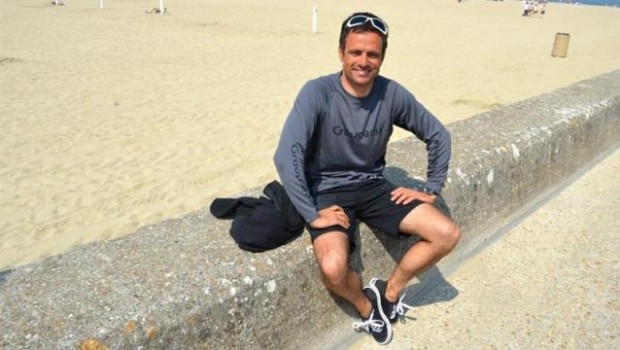



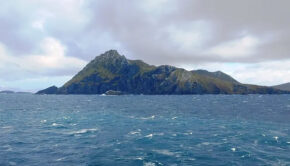
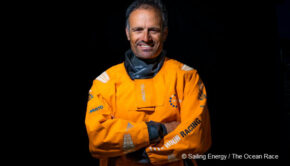
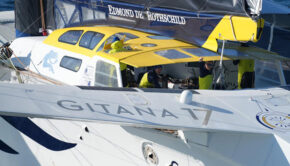
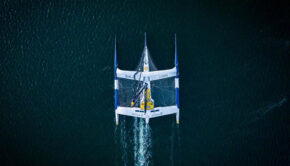
 We’ll keep your information safe.
We’ll keep your information safe.